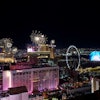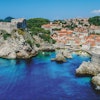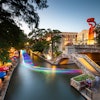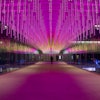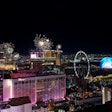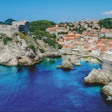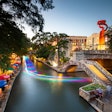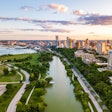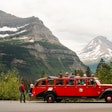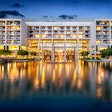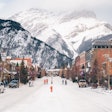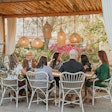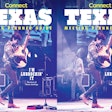On July 4, 2016, Baton Rouge, like most American cites, celebrated Independence Day with cold beer, hot dogs and fireworks. By Labor Day, Louisiana’s capital was reeling from six weeks of crises: the police shooting death of a local resident on July 5; the shooting deaths of three policemen 12 days later, and 10 days of torrential rains that brought epic floods and 13 more deaths in August.
In response, Visit Baton Rouge, the city’s official tourism arm, teamed up with MESH, its newly hired public relations firm, creating a marketing program to tell visitors that Baton Rouge and its tourism industry, while shaken, was were open for and welcoming business. MESH came up with three defining Baton Rouge elements—music, food and festivals—and developed an ADDY award-winning ad campaign around them (using traditional and social media) targeting six-hour drive markets during the city’s different seasons. As a result, VBR’s visitor inquiries jumped nine percent in 2017 over 2016’s total, while its website hits rose by a third from the previous year.
Eighteen months later, Paul Arrigo, CDME, president and CEO of Visit Baton Rouge, reflects on how his agency worked through the crises and what they took away from the experience.
How much group business was lost in the period immediately following the shootings and floods?
The revenue lost was minimal, partly because we reached out to the meeting planners to let them know what was going on. We had to move a few meetings and a couple were postponed.
At what point did Visit Baton Rouge decide on this PR campaign?
Discussions were in place after the first two crises, partly because we knew the current ad campaign was not a good fit, given the circumstances. After the third event, we knew that a new campaign was needed immediately and with an outside viewpoint.
Why the need for such a step?
We believed in making sure we were communicating with our clients—meeting professionals and leisure travelers who were considering coming to Baton Rouge. We didn’t want the headlines and [news] stories to tell that for us.
Had the city become torn apart by all that happened?
Actually, the opposite. The series of events really brought this community together. The Cajun Navy was a great example of that. Residents from all walks of life came together in support of one another. A year later, we saw the need to help our neighbors in Houston and came together when help was needed beyond our borders.
How was the publicity surrounding the crises hurting the capital city’s image within the state and farther away?
Prior to the crises, it was discovered that, through research by our Baton Rouge Area Chamber and Visit Baton Rouge, the city’s image was neither well known nor negative. Afterward, we knew that due to the press we’d received there were mixed messages. The campaign helped reinforce that while we had been through crises we were an optimistic community.
How specifically did you want the campaign to help Baton Rouge in terms of group business?
We looked to our agency to tell the story of who we were and how, as a community, we became stronger and closer through crises.
What did the PR campaign cost Visit Baton Rouge?
This campaign was gifted to the city by MESH. Raycom Media also put together Louisiana Rising, a televised benefit concert for flood relief. Their work was extremely beneficial and instrumental in telling our story, using Louisiana natives Harry Connick, Jr. and Randy Jackson to emcee that program.
Did you reach out directly to specific types of meeting groups with this campaign?
Yes, and this was accomplished through personal and professional connections which reached locally, statewide, regionally, nationally and internationally. There was also a lot of outreach from our connections during this time as well.
What’s the take away for you after this entire experience?
Cities facing and recovering from crises have become part of our society, not just here but everywhere. We have to be flexible, and know that the experiences we face make us stronger and define who we are. More than 18 months later, this community has bounced back and has a lot to be proud of.